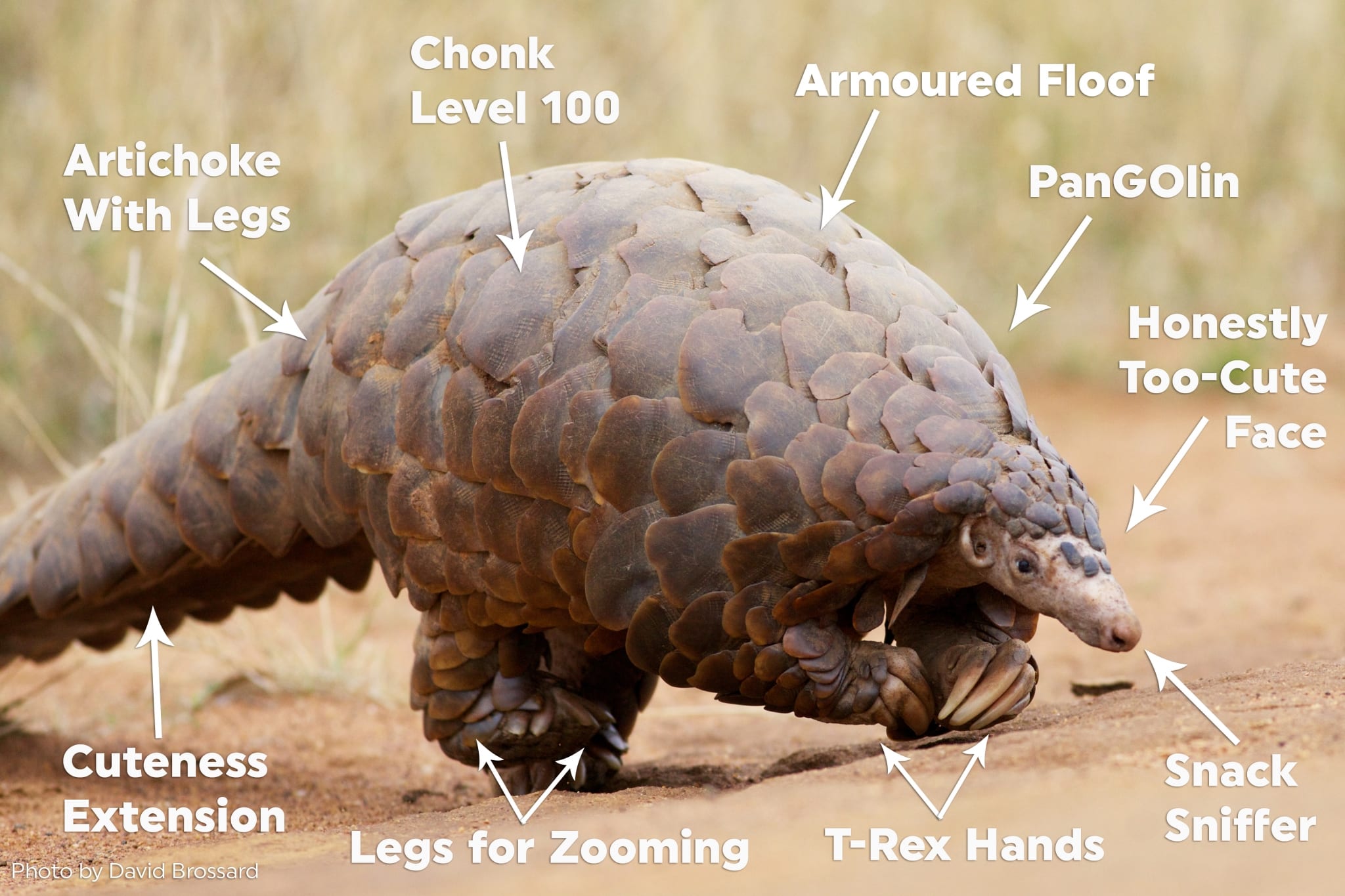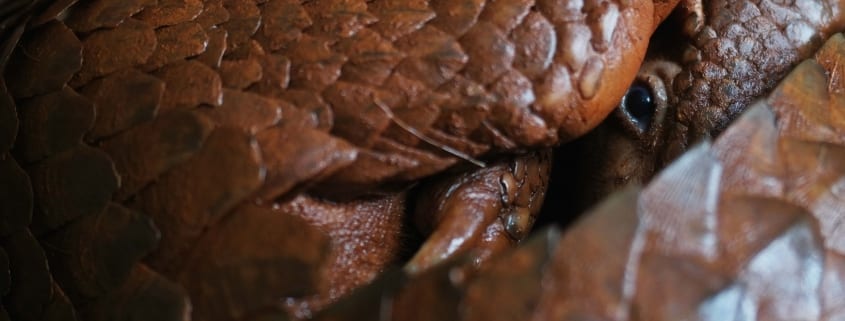The Pangolin, Unscienced
You might have heard of a pangolin. Or you might not have.
But Rainforest Trust’s Outreach & Communications Team wanted to show you the pangolin’s true anatomy. We hope that learning more about this animal found in Africa and Asia will lead you to learning to love the eight species of pangolin as much as we do. And, of course, we hope you’ll help protect them from extinction.
 Original photo of Critically Endangered Sunda Pangolin by David Brossard.
Original photo of Critically Endangered Sunda Pangolin by David Brossard.
This shy mammal has the distinction of being the one of the least known and most trafficked animals in the illegal wildlife trade. The pangolin’s Armoured Floof is attractive to many across Asia, as the scales are thought to hold major medicinal properties. And with a Chonk Level of 100, the interest in hunting pangolins for meat is a prominent problem.
While the pangolin’s main defense against poachers and other threats is curling into a tight protective ball, it does have Legs for Zooming if it needs to enter PanGOlin mode.
The pangolin subsists on ants and other insects, using T-Rex Hands to dig into termite mounds, and its Snack Sniffer to root out savory larvae. Some folks refer to pangolins as scaly anteaters, but a more apt title is “Artichoke with Legs,” considering its armored adorability. The pangolin’s Honestly Too Cute Face is enhanced by its Cuteness Extension on the other end.
It is estimated that 2.7 million pangolins are poached each year, so this World Pangolin Day, consider donating to save pangolin habitat in Nepal. All of your gift will go directly to conservation action at our project site, including being used to hire forest guards who ward off the biggest threat to pangolin survival: Us.
Click here to learn more about the plight of the pangolin.





